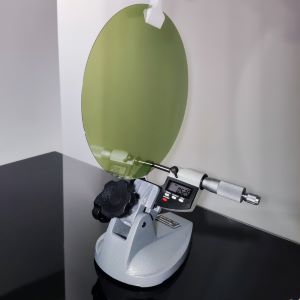
The Schottky barrier is an electric potential barrier formed at the junction between a metal and a semiconductor due to the difference in energy levels between them. In the modern semiconductor industry, SiC wafers have emerged as an ideal choice for constructing Schottky barriers, garnering significant attention.

1. SiC wafers possess numerous advantages, particularly 4H-N-type silicon carbide wafers. These wafers demonstrate excellent performance in constructing Schottky barriers, with advantages including high electron mobility, wide bandgap, and high thermal stability. High electron mobility facilitates enhanced electron transport performance by minimizing electron scattering during movement within the crystal. Meanwhile, the wide bandgap yields higher breakdown voltages and lower reverse leakage currents, contributing to improved device stability. Furthermore, high thermal stability enables SiC wafers to maintain consistent performance in high-temperature environments, expanding their applicability across various applications.
2. SiC wafers and their constructed Schottky barriers find crucial applications across multiple domains. In the field of power electronic devices, Schottky diodes are widely employed in power management, variable frequency drives, and electric vehicles to enhance efficiency and performance. In RF and microwave devices, Schottky barrier structures are utilized to fabricate RF switches, mixers, and power amplifiers, meeting the demand for high-performance devices in communication and radar systems. In optoelectronic devices, SiC wafers serve as contact electrodes for photodetectors, enabling high-speed, high-sensitivity light detection critical in optical communication and sensing applications. Additionally, SiC wafers are extensively applied in power modules and the energy sector, supporting applications such as power electronics conversion, electric vehicle control, and solar energy utilization.
In conclusion, SiC wafers, as an ideal material for constructing Schottky barriers, possess numerous advantages and play a pivotal role in power electronics, RF and microwave, optoelectronics, and energy sectors. With continual technological advancements and expanding application scopes, the position of SiC wafers in the semiconductor industry is expected to consolidate and elevate further.
As semiconductor technology advances, Gallium Nitride (GaN) has become a core material in optoelectronics, rad...
With the rapid advancement of third-generation semiconductor technologies, Silicon Carbide (SiC) has emerged a...
As third-generation semiconductor materials such as silicon carbide (SiC) and gallium nitride (GaN) continue t...
